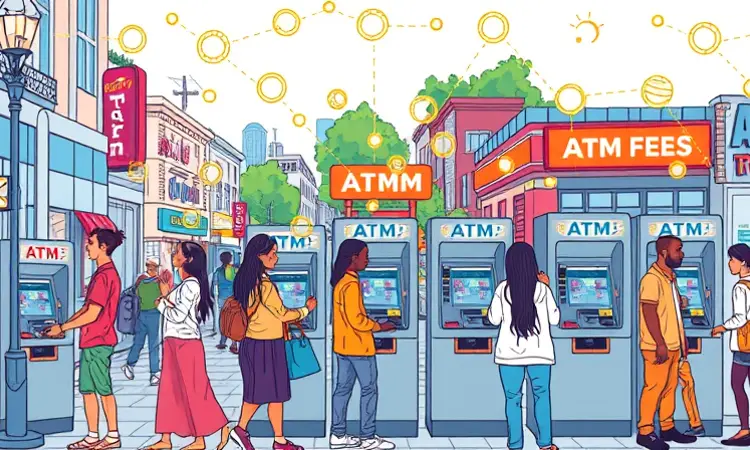With ATM fees soaring to a 26-year high in 2024, knowing where and how to withdraw cash can save you handsomely. This guide dives deep into banking options and ATM networks, empowering you to keep more of your hard-earned money.
Understanding ATM Fees
Every time you withdraw money outside your bank’s network, you often pay two fees: one from the ATM owner and another from your bank. The national average total cost climbed to $4.77 per withdrawal in 2024, a significant increase that affects nearly every consumer.
In contrast, using an in-network ATM is typically surcharge-free ATM access for account holders. Major banks like Bank of America, Citibank, and Wells Fargo charge between $2.50 and $3.00 per out-of-network withdrawal, compounding the expense when you’re already in urgent need of cash.
Largest ATM Networks and Providers
Some institutions have responded by building or joining vast networks of fee-free ATMs. These include online banks, credit unions, and cooperatives collaborating to offer customers widespread convenience.
Key Strategies to Minimize Fees
Choosing the right institution and approach can drastically lower—or eliminate—ATM charges.
- Pick a bank or credit union with a large, nationwide, surcharge-free networks and minimal out-of-network penalties.
- Select accounts offering monthly ATM fee reimbursements up to a meaningful cap, or even unlimited refunds.
- Use shared networks like CO-OP, MoneyPass, Allpoint, and STAR to access tens of thousands of free ATMs.
- Consider cash back at point-of-sale—it’s often free and avoids ATM fees altogether.
Role of Online Banks and Credit Unions
Online banks and credit unions have transformed the ATM fee landscape by refunding out-of-network surcharges or providing expansive surcharge-free networks. Institutions such as LendingClub Bank and Axos Bank lead with no fees and unlimited reimbursements, offering unlimited domestic fee reimbursements that shield you from unplanned costs.
Credit unions often participate in cooperative networks, granting members surcharge-free access even when using machines owned by other financial institutions. In some cases, members can receive rebates of up to $25 each month, making occasional out-of-network transactions worry-free.
International ATM Withdrawals
Travelers should be aware that withdrawing cash abroad typically incurs both a flat fee and a foreign transaction percentage, usually 1–3%. Choosing a travel-friendly account that waives or reimburses these charges can result in significant savings over multiple withdrawals during a trip.
Look for banks that advertise no foreign withdrawal fees, or those offering global ATM alliances. Keeping cash needs minimal and using credit cards for most purchases can also reduce reliance on international ATMs.
Evolution of ATM and Related Fees
Beyond ATM charges, consumers face monthly maintenance fees, overdraft penalties, and minimum balance requirements. In 2024, the average checking account fee ranged from $10.95 at small banks to $16.35 at large banks. Overdraft fees averaged $27.08, though many forward-thinking banks have eliminated them to offer a more transparent banking experience.
This shift reflects a broader trend toward consumer-friendly policies. As fee pressure mounts, institutions differentiate themselves by reducing or refunding common surcharges, driving competition that benefits customers.
Choosing the Right Account for You
When evaluating checking or savings accounts, weigh the following factors:
- Network reach: Does the bank offer a nationwide or global surcharge-free ATM network?
- Fee reimbursements: What is the monthly cap on out-of-network ATM surcharge refunds?
- Account requirements: Are there minimum balances or direct deposit thresholds to waive maintenance fees?
- International policy: Does the institution charge foreign ATM fees or foreign transaction fees on withdrawals?
Conclusion: Take Control of Your Cash Withdrawals
By understanding the distinctions between in-network and out-of-network ATMs, you can adopt smart banking habits that avoid unnecessary ATM fees and protect your budget. Start by comparing local options, using ATM locator tools on your phone, and carefully reviewing reimbursement policies before opening a new account.
Armed with this knowledge, you’ll navigate fee structures with confidence, ensuring every dollar you withdraw stays where it belongs—in your wallet. Embrace these strategies today, and transform ATM fees from an unavoidable burden into a manageable, even zero-cost, part of your financial routine.














